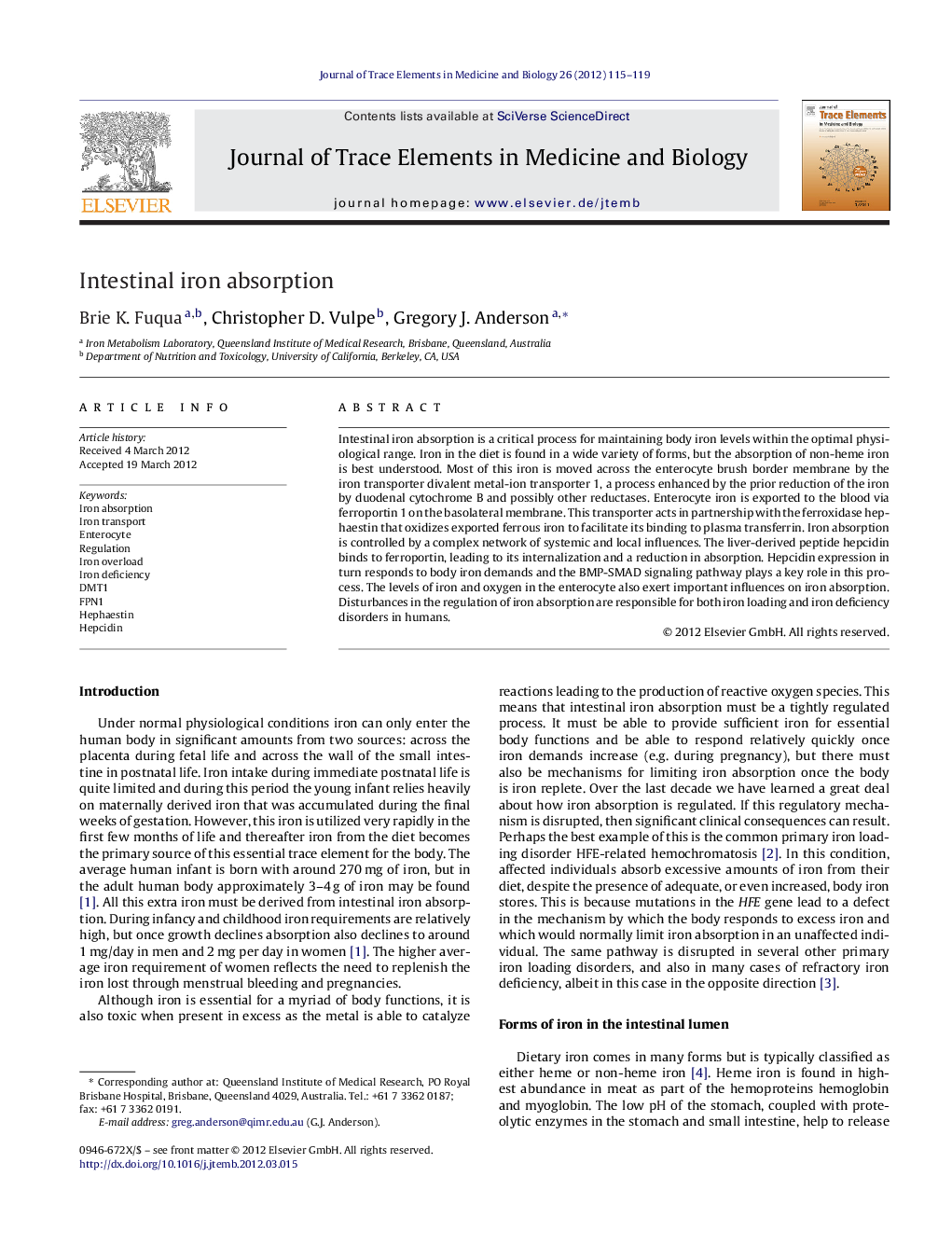| کد مقاله | کد نشریه | سال انتشار | مقاله انگلیسی | نسخه تمام متن |
|---|---|---|---|---|
| 1226690 | 1494828 | 2012 | 5 صفحه PDF | دانلود رایگان |

Intestinal iron absorption is a critical process for maintaining body iron levels within the optimal physiological range. Iron in the diet is found in a wide variety of forms, but the absorption of non-heme iron is best understood. Most of this iron is moved across the enterocyte brush border membrane by the iron transporter divalent metal-ion transporter 1, a process enhanced by the prior reduction of the iron by duodenal cytochrome B and possibly other reductases. Enterocyte iron is exported to the blood via ferroportin 1 on the basolateral membrane. This transporter acts in partnership with the ferroxidase hephaestin that oxidizes exported ferrous iron to facilitate its binding to plasma transferrin. Iron absorption is controlled by a complex network of systemic and local influences. The liver-derived peptide hepcidin binds to ferroportin, leading to its internalization and a reduction in absorption. Hepcidin expression in turn responds to body iron demands and the BMP-SMAD signaling pathway plays a key role in this process. The levels of iron and oxygen in the enterocyte also exert important influences on iron absorption. Disturbances in the regulation of iron absorption are responsible for both iron loading and iron deficiency disorders in humans.
Journal: Journal of Trace Elements in Medicine and Biology - Volume 26, Issues 2–3, June 2012, Pages 115–119